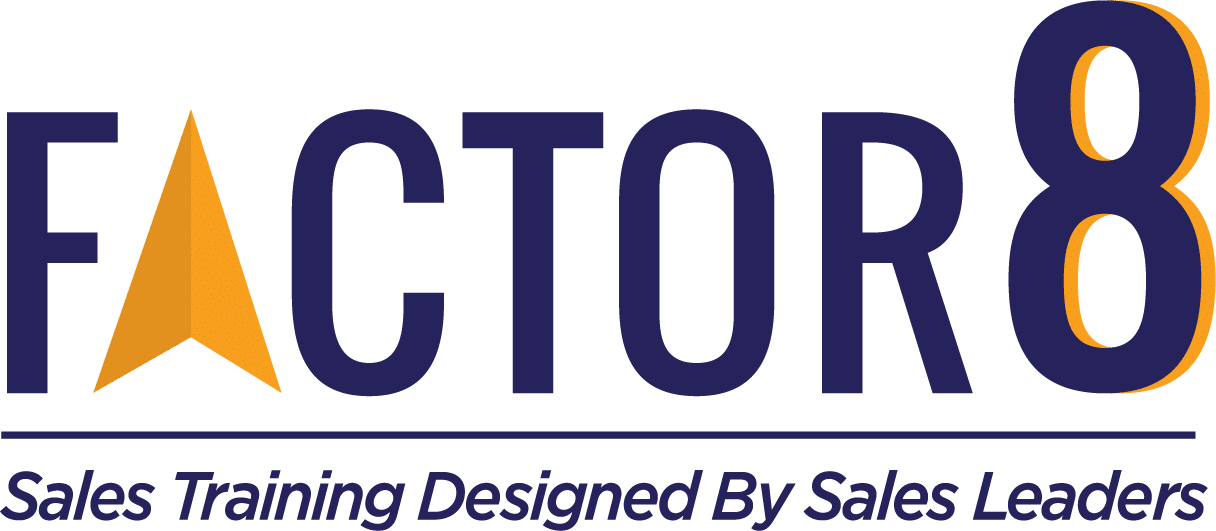Inside Sales Training: What Does Good Training Look Like?
Whether you’re shopping around for external inside sales training vendors or working with your internal training department, knowing what good inside sales rep training looks like is the first step to ensuring your training is checking all the key boxes.
We’ve outlined a few of the most important considerations to keep in mind when choosing an inside sales training partner.
Decide What Good Inside Sales Training Looks Like
This shouldn’t be a surprise to any sales leaders out there — but what makes good inside sales training is results. You’ll be able to know whether or not sales training worked simply because it moved the needle.
These “results” look different depending on your company, team, and goals. It’s important to go into the sales training and decide on what those goals are to you — whether it’s sales units sold or market share gained.
READ: How to Measure Sales Training ROI
This is even more important when partnering with an external sales training vendor. The vendor should understand your goals as well as your sales process, product, customers, industry, and competitors. There is so much specialization in the market today, don’t let a vendor bring SDR training to your team of AEs.
In order for sales training to be considered “good”, it must achieve your goals. Outlining what these goals are, and what success looks like, beforehand is a surefire way to get what your team needs out of their training.
We recommend identifying metrics, behaviors, KPIs, and overall results that you expect to shift during and after the training. Metrics and behaviors should lift immediately showing you’re on the right track, and KPIs are early indicators that the results are on the way. Identifying metrics or results only can lead to a miss.

5 Characteristics of Good Inside Sales Training
After the goals are set, here are a few more tips to ensure you’re maximizing your training investment:
1. The Sales Training is Customized
Really great sales training is customized to your industry and product/service.
This ensures your reps aren’t left trying to figure out how to take a broad theory and apply it to their job, customer, or service.
While it’s true that customized sales training is more expensive, the ROI is up to twenty-fold when you consider how much your reps are actually retaining, and how much they can apply immediately to their practices.
Use public seminars and events to help someone get a tip or two. Use custom live training to move the needle on results.
2. Get a Professional Sales Trainer
Aberdeen reported that 85% of the sales teams that are considered “best-in-class” utilize professional sales trainers or resources.
Don’t try and turn your managers or reps into trainers. Let’s face it, they’ve got enough on their plates. Plus, even really good managers and reps have no idea how to train — it’s just not their job! They might be excellent at sales, but they have no expertise in training.
Even worse, don’t let your HR department teach sales. They’re great at training and professional facilitation in many areas of your business, but their bailiwick is in company orientation and sexual harassment training — not sales and selling. They may be excellent at training but have no expertise in sales.
See where we’re going with this?
Make sure to bring in someone who is an expert at both training and sales. That’s the secret to good inside sales training, and it’s what the best in class are doing.
3. Make Sure the Training Has the Right Focus
If you’re training your inside sales reps, make sure they’re attending an inside sales training. It sounds simple, but oftentimes well-meaning sales team leaders are duped into thinking “sales training” is enough. Shoe-horning your company’s existing field training for your inside team may actually do more damage than good.
Most popular sales books and training curricula deal with a very narrow view of selling: The conversation between Person A and Person B. Anyone who has been working in inside sales for a while can agree that the true issue lies in getting that interaction in the first place.
If your reps are struggling with connecting with decision-makers, getting callbacks, finding the right people, figuring out who to call, and capturing attention at the top of the funnel, then conversation selling and overcoming objections will miss the mark.
Make sure that your inside sales reps are being coached on topics like:
- Leaving compelling voicemails that will be returned
- Capturing a prospect’s attention in the first 30 seconds
- Leading with value
- Creating engaging conversations vs. script reading
- How to get a callback or bridge to the next call
- Finding more decision-makers in the company
- Dealing with gatekeepers
It’s important to make sure other aspects of the strategy are covered as well, so the reps can rely on their managers less for questions such as:
- Who should I call first?
- How often should I call?
- Should I leave a voicemail message?
- How often?
- Now, what do I do?

4. Sales Training NEEDS to Be Hands-On
Theory stinks.
During the training, make sure reps are getting on the phones. There’s no reason that training shouldn’t be stopped so that the reps can go try out the skills they’re learning, and role-plays don’t really tell the whole story, do they?
Live calls to live customers using the training guarantees that these training methods are going to be applied. Live calling in a safe space leads to more rep buy-in and builds confidence. When reps see the tactics work in real-time they adopt, apply, and try more often. Training fall-off (the forgetting curve) has the odds stacked against it now!
Make the training stick by actually making calls and building pipeline during training.
5. Make Sure Your Managers Get Involved in Sales Training
Put managers in the reps’ training, and when possible make sure they have their own version of the training class tailored for their needs. Managers need to learn how to recognize the new skills in action, when to coach, how to coach the new skill, when to celebrate it working, and how to keep the momentum alive when the trainers leave. Behavior change lives and dies with the management team, and their buy-in, involvement, and use of the new skills are critical to success.
Ask your vendor how the managers will be involved in retaining the new skills.
READ: Tips for Enablement Leaders to Increase Sales Coaching Focus
Good Training is Ongoing Training
You got it, training is a process, not an event. Reps reported a “Lack of Development” as a top 5 challenge every year for the past five years as reported by the American Association of Inside Sales Professionals. Aberdeen also reported missing development opportunities as the number one rep-reported reason for leaving companies.
Deciding to invest in rep development is a smart choice, but be sure you don’t assume that it is “one and done.” Your teams want ongoing opportunities to learn, grow, and advance their careers.
READ: Why Event-Based Sales Training Falls Short
Training Magazine reported an average number of development hours/year/employee at about 48 hours – or four hours/month. Is your internal training team ready to provide this? Most corporate training teams get quickly maxed by providing new hire orientation and onboarding. Manager coaching can fill some of the gaps, but if you’re talking with learning vendors, check their ongoing offerings as well.
Ongoing training will often nurture and advance skills taught onsite – helping check the box of retaining new skills and providing the ongoing development reps crave.
The easiest way to accomplish this is with vendor-provided online skills training or inside sales training courses after their session to brush up on their skills, hone in on their weak spots, and keep skills in practice.
When evaluating sales training software, look for interactive resources such as:
- Recorded call libraries
- Sample scripts/messaging starters
- Interactive micro e-learning modules
- Printable cheat sheets
- Manager coaching
- Team activities
- Videos
- Sales certifications
Reps want skills on-demand. Learning should be easy, fun, interactive, and flexible. The old days of long-form narrated slides and sales training videos are over. Anyone who has clicked their way through to the final test (or let it run in the background while doing email) can attest to the fact this isn’t engaging or effective.
Again, look for sales training software to engage your management team as well as the learners. New skills and a culture of development live and die on your front lines. Does the software provide manager resources?
How about fast-reference cheat sheets, coaching guides, or contest ideas? Is it nimble enough to allow quick reference before a big call or team meeting?
Get your sales managers involved in testing your top choices.
Are you looking for the best inside sales training programs?
Contact us today to learn about our customizable virtual sales training programs
available for reps and managers.

